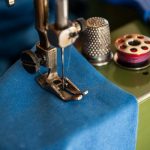Microneedling has gained significant attention in skincare for its ability to rejuvenate the skin and promote collagen production. This minimally invasive procedure uses fine needles to create micro-injuries in the skin, triggering the body’s natural healing process. By stimulating collagen and elastin production, microneedling has become a popular option for those seeking smoother, firmer skin without the downtime of more invasive treatments.
Microneedling Stimulates Collagen
Collagen is a structural protein found in the skin, responsible for maintaining firmness and elasticity. Over time, collagen production decreases due to aging and environmental factors, which can lead to wrinkles, fine lines, and sagging skin. Microneedling works by creating tiny, controlled injuries in the skin’s surface. These micro-injuries stimulate the body’s wound-healing response, which involves several stages, including inflammation, proliferation, and remodeling.
- Inflammatory Stage: The wounds signal the body to send platelets, growth factors, and white blood cells to the affected area.
- Proliferation Stage: Fibroblasts produce new collagen and elastin fibers.
- Remodeling Stage: Newly formed collagen fibers are reorganized to enhance the skin’s structure and resilience.
This process not only repairs the micro-injuries but also improves skin texture and tone over time.
Explaining Radiofrequency Microneedling
Radiofrequency (RF) microneedling is an advanced form of the procedure that combines traditional microneedling with RF energy to amplify results. RF microneedling delivers controlled heat to deeper layers of the skin through tiny needles. The combination of mechanical micro-injuries and thermal energy stimulates a more robust healing response, promoting collagen production and skin tightening.
The addition of RF energy targets deeper layers of the dermis without causing significant damage to the skin’s surface. This characteristic makes RF microneedling suitable for addressing issues like acne scars, skin laxity, and deeper wrinkles. The heat generated by RF energy encourages skin contraction, which can further enhance the tightening effect.
Potential Applications of Microneedling
Microneedling is a versatile treatment widely used in dermatology and skincare. It is particularly effective for improving skin texture, reducing the appearance of fine lines, and minimizing the size of pores. Its ability to enhance collagen production also makes it effective for treating mild scarring, including acne scars and surgical scars.
These treatments are often used to tackle more complex skin issues. These include uneven skin tone, stretch marks, and deeper wrinkles that require targeted intervention. Its ability to rejuvenate the skin from within makes it a go-to option for individuals looking to address multiple concerns in one procedure, delivering noticeable improvements over time.
Microneedling is frequently paired with other treatments to amplify its benefits. Serums or platelet-rich plasma (PRP) are often applied during the procedure to boost skin regeneration. The microchannels created during microneedling allow these treatments to penetrate deeper into the skin, enhancing their effectiveness. This combination approach maximizes the therapeutic results, offering a comprehensive solution for rejuvenating the skin.
Promoting Skin Health Through Science
These procedures have demonstrated their value in addressing various skin concerns while supporting the natural healing processes of the skin. By understanding the science behind microneedling, individuals can make informed decisions about incorporating this technique into their skincare routines. Whether you are addressing specific concerns or exploring preventative care, microneedling provides a science-backed option for enhancing skin resilience and overall appearance.







